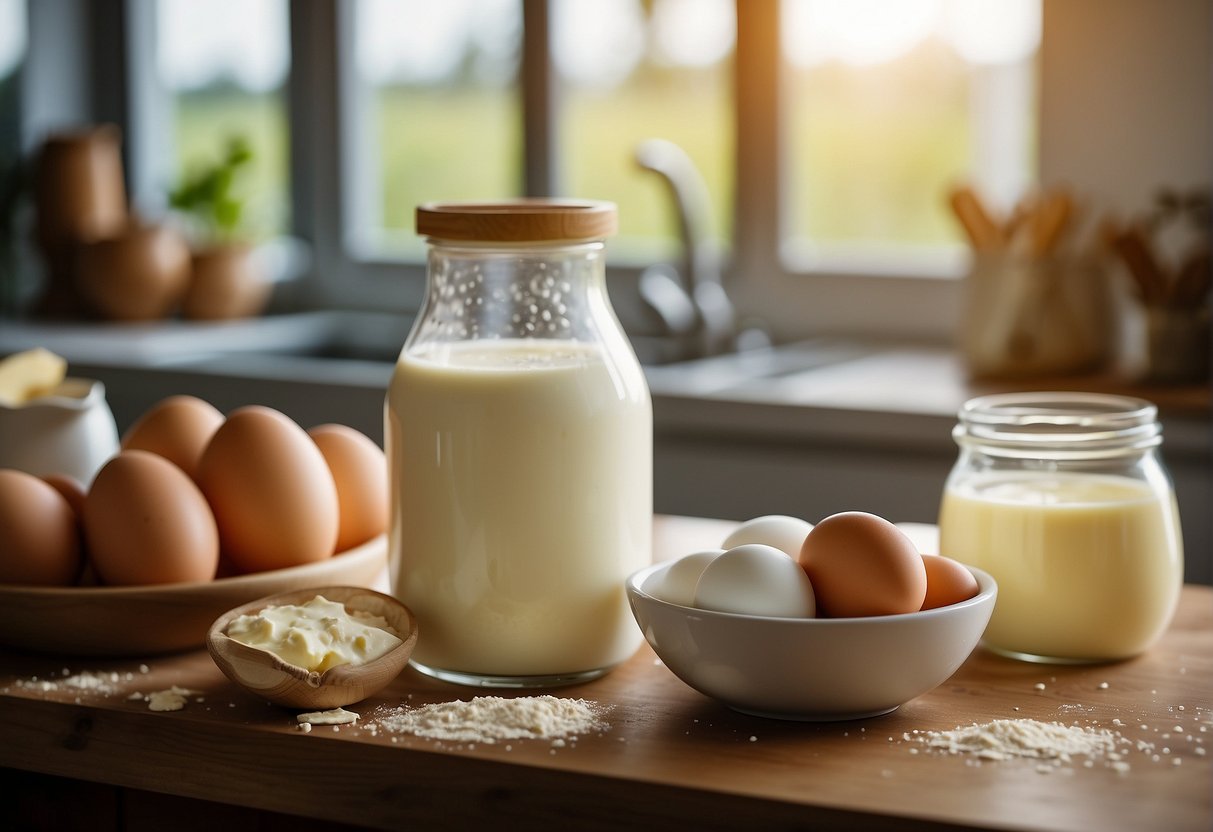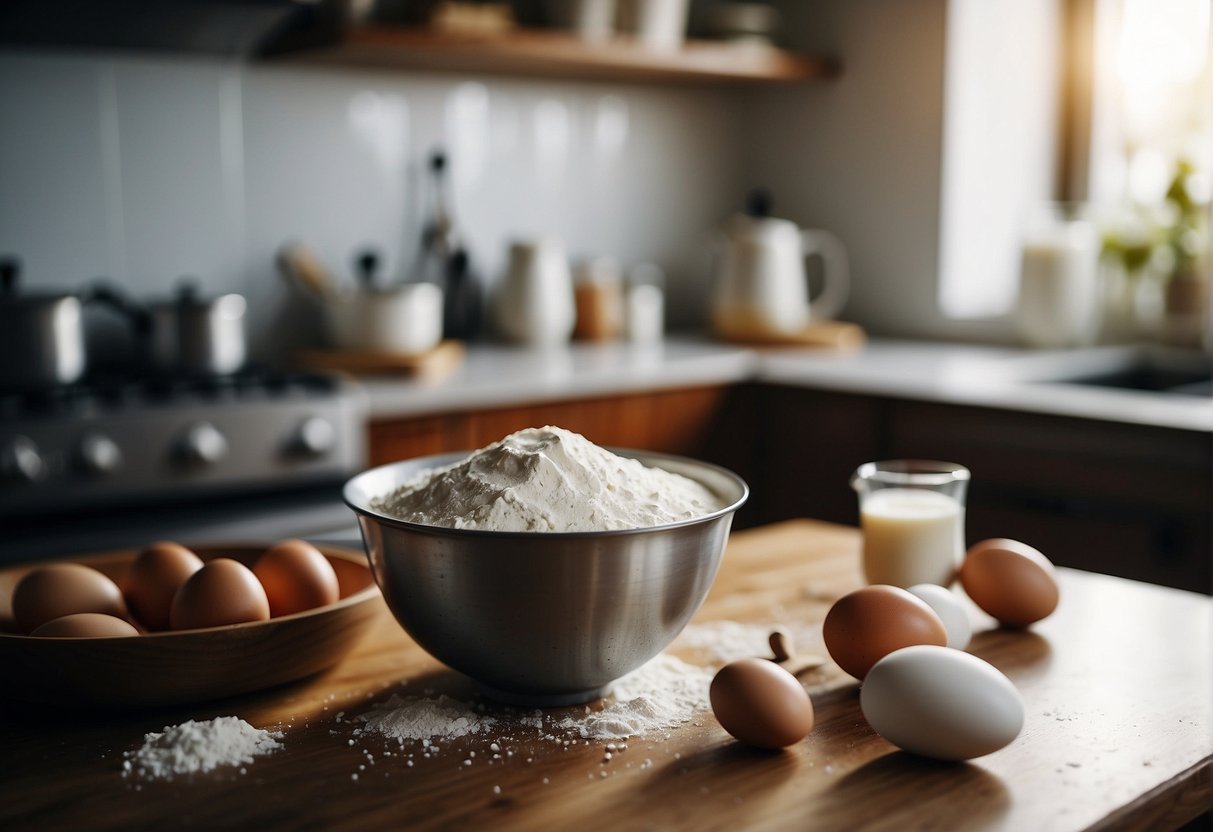Making pancakes is a delightful way to start your day or even enjoy a tasty snack. This classic and simple dish can be easily prepared with ingredients that you might already have in your kitchen. In this article, we’ll guide you through the process of making delicious homemade pancakes to serve up a stack that’s guaranteed to impress.
To make the perfect pancake, all you need is a handful of common ingredients and some basic kitchen tools. The key elements of a pancake recipe include flour, eggs, milk, baking powder, and a pinch of salt. Once you have these ingredients, you’ll be ready to mix up a smooth and creamy batter that will form the foundation for your fluffy pancakes.
In the following sections, we’ll delve into the step-by-step process to make pancakes, ensuring that every flip results in golden and satisfying stacks. From mixing the batter to cooking them on the griddle, you’ll discover all the tips and tricks to create mouthwatering homemade pancakes.
Gathering Ingredients

Flour Selection
When making pancakes, choosing the right flour is essential. The most common option is all-purpose flour. This versatile flour guarantees a fluffy texture. If you prefer a more wholesome variant, try using whole wheat flour—use 105 grams (1 cup minus 2 tablespoons) to substitute the all-purpose flour. For those who need a gluten-free option, various gluten-free flours are available in the market. Remember, each type of flour may alter the taste and texture, so choose wisely.
Milk and Eggs Essentials
Milk and eggs are crucial components in pancake batter. They contribute to the taste, texture, and structure of your pancakes. Most recipes call for regular cow’s milk, but you can also use alternatives such as almond, soy, or oat milk. Always ensure you have fresh eggs on hand—typically, you will need 1 or 2 large eggs for a standard recipe.
In some recipes, buttermilk is used instead of regular milk. If you don’t have buttermilk, you can easily make a substitute by combining 1 cup of milk with 1 tablespoon of lemon juice or white vinegar. Let it sit for a few minutes, and you’ll get a tangy, homemade buttermilk.
Leavening Agents: Baking Powder and Baking Soda
To achieve a fluffy and light texture, use leavening agents like baking powder and/or baking soda in the pancake batter. Baking powder is typically used in most recipes because it is a double-acting agent. However, if your recipe calls for self-rising flour, you can omit the baking powder and salt as the flour already contains those ingredients.
Basic Pancake Ingredients:
- Flour (all-purpose, whole wheat, or gluten-free)
- Milk (cow’s milk, buttermilk, or a dairy-free alternative)
- Eggs (large)
- Baking powder (unless using self-rising flour)
- Salt
- Sugar (optional, for added sweetness)
By gathering these essential ingredients and understanding their roles, you will be well-prepared to create a delicious batch of pancakes.
Preparing the Batter

Mixing Techniques
When preparing pancake batter, start by combining the dry ingredients (1 1/2 cups all-purpose flour, 2 tablespoons sugar, 1/2 teaspoon baking soda, 2 teaspoons baking powder, and 1/2 teaspoon salt) in a large mixing bowl. In a separate bowl, mix the wet ingredients (1 1/2 cups milk, 2 eggs, 2 tablespoons vegetable oil, and 1 teaspoon vanilla extract if desired).
Gradually pour the wet mixture into the dry ingredients, gently whisking until just combined. Be careful not to overmix, as this can cause the pancakes to turn out tough. A few lumps in the batter are perfectly acceptable. Let your batter rest for about 10 minutes before cooking to ensure a tender result.
Consistency and Texture
The consistency of your pancake batter is crucial to achieve the desired texture. The ideal batter thickness is that of a slightly thick yet pourable consistency. If your batter is too thick, add a bit more milk to thin it out. If it is too thin, add a little flour to create a thicker texture.
While cooking the pancakes, watch for bubbles forming on the surface. Once the edges appear dry and bubbles start to pop, it’s time to flip the pancake. This ensures a light, fluffy texture on the inside and a golden brown exterior.
Adding Flavor and Variations
Pancakes can be customized by adding your favorite ingredients into the batter. Here are some popular additions:
- Fruits: Gently fold in fruits such as blueberries, diced bananas, or chopped strawberries to add natural sweetness and extra flavor.
- Chocolate chips: For a sweet and indulgent treat, sprinkle in some chocolate chips to create gooey chocolate pockets within the pancakes.
- Spices: Enhance the flavor of your pancakes with spices like cinnamon or nutmeg, adjusting the amount to your preference.
Remember, when adding these variations, be sure not to overmix your batter. Gently fold in your chosen ingredients to maintain a light and fluffy texture in your pancakes.
Cooking the Pancakes
Using the Right Pan or Griddle
To achieve the best results when cooking pancakes, it’s important to choose the right pan or griddle. An electric griddle set at 375°F is a popular choice, but if you don’t have one, a heavy cast iron or nonstick skillet over medium heat works just as well. Before you start cooking, preheat the pan and then slightly lower the temperature to around 360°F to 370°F.
When it’s time to cook your pancakes, add a small amount of oil or butter to the pan. Both vegetable oil and butter provide a nice non-stick surface for your pancakes. However, butter adds a slightly richer flavor.
Achieving the Perfect Golden Brown
The key to making perfect golden-brown pancakes is monitoring their cooking progress. Keep an eye on the following indicators:
- Bubbles on top: When bubbles start to form on the surface of the pancake (after about 2 to 3 minutes), it’s almost time to flip.
- Light browning around the edges: Check the edges of the pancake for a light golden color. When you notice this, it’s an indication that it’s time to flip.
To ensure even cooking, you might want to rotate the pancake 180 degrees halfway through cooking on each side.
Flipping Techniques
Flipping pancakes can be tricky, even for experienced cooks. Here are some tips to help you perfect your flipping technique:
- Use a wide, thin, and flexible spatula: A wide spatula will provide better support for the pancake, while a thin and flexible one will easily slide under the pancake without causing any damage.
- Wait for the right time: Don’t rush flipping your pancakes. Wait for the bubbles to form and the edges to turn golden brown before attempting to flip them.
- Slide the spatula under the pancake in one smooth motion: Confidence is key! Swiftly slide the spatula under the pancake and gently lift it.
- Flip with confidence: With a quick flick of your wrist, turn the pancake over onto the other side.
Practice these tips, and soon you’ll be flipping pancakes like a pro! And always remember, even if the first pancake doesn’t turn out perfect, it often tastes just as delicious.
Serving and Toppings
When it comes to serving pancakes, the toppings you choose can transform your basic flapjacks into an extraordinary breakfast or brunch. In this section, we’ll discuss some classic favorites as well as more creative topping combinations to help you elevate your pancake game.
Traditional Toppings
These are the “go-to” toppings that many people reach for when it comes to dressing up their pancakes:
- Maple syrup: It’s hard to go wrong with this classic choice. Drizzle generously over your warm pancakes for a sweet and satisfying flavor.
- Fresh fruit: Strawberries, blueberries, bananas, and other fresh fruits can add a refreshing, natural sweetness to your pancakes, not to mention a nutritional boost.
- Yogurt: A dollop of yogurt, either plain or flavored, can provide a creamy contrast to your pancakes while adding extra protein.
- Nuts: Chopped almonds, walnuts, or pecans can bring a pleasant crunch and some healthy fats to your pancake stack.
- Honey: A natural alternative to syrup, honey offers sweetness with a distinctive flavor. Drizzle it over your pancakes for a delicious touch.
- Cinnamon: A sprinkle of cinnamon over your pancakes adds a warm, comforting taste that pairs brilliantly with both sweet and savory toppings.
Creative Topping Combinations
If you’re looking to get more adventurous with your pancake toppings, consider trying out some of these unique combinations:
- Lemon zest and poppy seeds: Add grated lemon zest and a sprinkle of poppy seeds to your pancakes for a bright citrus twist.
- Nutella and raspberries: Spread a layer of Nutella on your pancakes and top with fresh raspberries for a decadent, chocolatey treat.
- Sliced almonds and orange marmalade: Top your pancakes with a spoonful of orange marmalade and a scattering of sliced almonds for a tangy, nutty flavor.
- Biscoff cookie spread and pears: Spread Biscoff cookie butter on your warm pancakes and add sliced pears for a delightful take on the classic European flavors.
- Ricotta cheese and figs: A dollop of creamy ricotta cheese pairs beautifully with sliced figs, making for a sweet and savory treat that’s sure to impress.
Remember, the possibilities are endless when it comes to pancake toppings. Feel free to mix and match your favorites, and don’t be afraid to experiment with new flavors and textures.
Storage and Reheating
Storing for Short-Term
When you have leftover pancakes, it’s important to store them properly so they retain their taste and texture. To store pancakes short-term, simply let them cool to room temperature and then place them in an airtight container with layers of parchment paper in between each pancake. This will keep them fresh for up to 2 days in the refrigerator.
Freezing and Thawing Pancakes
If you want to enjoy your pancakes longer than a couple of days, consider freezing them. Here’s a simple way to freeze and thaw pancakes:
- To freeze, allow pancakes to cool completely before placing them in an airtight container or a sealable plastic bag. It’s a good idea to add a layer of parchment or wax paper between pancakes to prevent them from sticking together.
- Store the pancakes in the freezer, where they’ll keep for up to 3 months.
When it comes time to reheat your frozen pancakes, you have several options:
- Microwave: Place 1 to 5 frozen pancakes on a microwave-safe plate, and microwave about 20 seconds for 1 pancake, and about 60 seconds for 5 pancakes. The time will vary depending on the wattage of your microwave.
- Oven: Preheat your oven to 350 degrees Fahrenheit. Place your pancakes on a non-stick baking sheet in a single layer, leaving some space in between them. Cover the sheet tightly with aluminum foil and bake for 5 to 10 minutes until thoroughly heated.
- Toaster: Place one pancake in each toaster slot and set the toast level fairly high. For most toasters, the highest setting or one level below the highest should suffice for reheating cold pancakes.
- Air Fryer: (Optional) If you have an air fryer, you can also use it to reheat your pancakes. Place the frozen pancakes in the air fryer basket and air-fry at 350°F for 5 to 7 minutes.
With these methods, your previously made pancakes will be ready to enjoy with minimal effort, ensuring you always have a delicious breakfast option on hand.